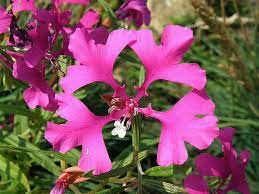Lilak zwyczajny, bez — Syringa vulgaris
 Trudno sobie wyobrazić ogród, w którym nie ma bzu, więc i na działce powinien znaleźć się chociaż jeden jego krzew. Ponieważ po paru latach rozrasta się dość szeroko, najlepiej posadzić go koło altany albo w rogu działki, w miejscu wypoczynku. Warto sadzić tylko szlachetne odmiany, których jest dużo. Można się z nimi zapoznać w ogrodach botanicznych lub choćby przeglądając katalogi. Są odmiany o kwiatach białych, pojedynczych lub pełnych (np. Madame Lemoine), o bardzo dużych pojedynczych kwiatach barwy purpurowofioletowej (Massena) lub różowofioletowej (Marechal Foch), a także odmiany o wielkich kiściach jasnoametystowych i niebieskawych.
Trudno sobie wyobrazić ogród, w którym nie ma bzu, więc i na działce powinien znaleźć się chociaż jeden jego krzew. Ponieważ po paru latach rozrasta się dość szeroko, najlepiej posadzić go koło altany albo w rogu działki, w miejscu wypoczynku. Warto sadzić tylko szlachetne odmiany, których jest dużo. Można się z nimi zapoznać w ogrodach botanicznych lub choćby przeglądając katalogi. Są odmiany o kwiatach białych, pojedynczych lub pełnych (np. Madame Lemoine), o bardzo dużych pojedynczych kwiatach barwy purpurowofioletowej (Massena) lub różowofioletowej (Marechal Foch), a także odmiany o wielkich kiściach jasnoametystowych i niebieskawych.
Lilaki rosną na każdej przeciętnej glebie. Na wybitnie ubogich i suchych glebach warto powierzchnię wokół krzewów wyściółkować co 2 lata obornikiem i w czasie suszy podlewać, przynajmniej póki krzewy są młode.
Kwitnące gałęzie lilaka można ścinać w dowolnej ilości — krzew na tym nie ucierpi. Pozostawione kwiatostany należy obcinać zaraz po przekwitnięciu, gdyż szpecą krzewy, a zawiązywanie nasion niepotrzebnie je osłabia. Ponadto konieczne jest cięcie według zasad stosowanych do krzewów II grupy.











